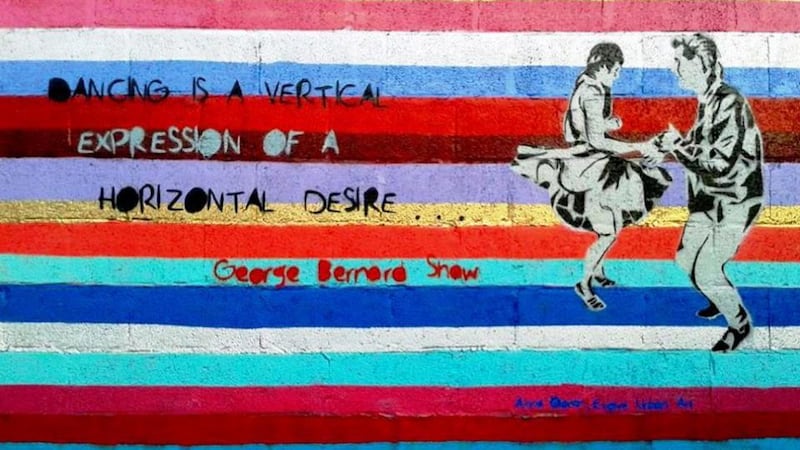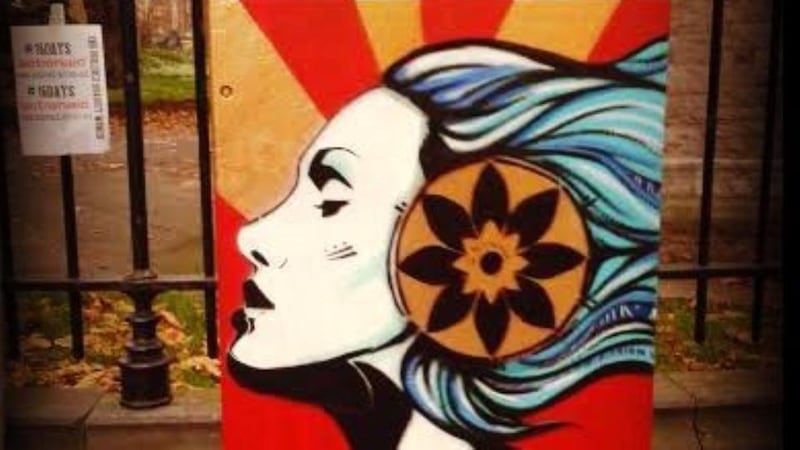Places gather reputations in different ways. Waterford’s historic walls and towers are a defining feature of the southeastern city, but more recently the area has also acquired a more troubled name. A new summer festival aims to use one to help restore the other, and to do it through a medium once associated with vandalism: graffiti or, more properly, street art.
The walls in question aren't the iconic ancient boundaries and towers, rather gable ends of vacant blocks and visual barriers in rundown areas. Organiser Edel Tobin, a local school teacher with a can-do spirit and a generous vision, had the idea last year after seeing coverage of Djerbahood, a project put together by the Tunisian-French artist Mehdi Ben Cheikh, in which 150 artists from around the world painted the walls of Erriadh, one of Tunisia's oldest villages.
“Tunisia used to be known as a meeting point on the spice route, and a centre of multiculturalism,” she says.


“It is only recently that they got bad press from fundamentalism. Similarly, Waterford has been in the news for unemployment and crime, but it’s a very different story when you’re living here; it’s a beautiful city, and full of potential.”
In an effort to harness that potential, Tobin worked with the city council to develop relationships with owners and to gain access to sites throughout the city. Street artist and curator Louise Flynn came on board to put together a programme that will see 24 sites being painted over the course of Waterford Walls.
A great honour
One of the artists is Dublin-based Anna Doran, who will be creating one of her trademark bright images, this time a peacock. “I said yes immediately, as soon as I saw the artists involved,” she says. “It’s a great honour to be among them.”
Apart from such household names as Banksy and Shepard Fairey, the street-art scene has largely been the preserve of an underground community, associated with night raids on public property and disruptive messaging, creating contentious – usually anti-establishment – conversations.
This is changing, as the reputation of street art grows and the dynamic of our cities changes. The “us and them” relationship is breaking down: or rather, those responsible for looking after our civic spaces have come to realise that operating in such a way creates problems, and that one of the symptoms of those problems, graffiti, can be used to solve them.
Transformative potential
Doran began her career working with Evolve Urban Art and Dublin City Council on projects small and enormous. “I used to get daunted by scale, but you get used to anything, and any weather. The one thing we hate is wind, because that sprays the paint back at you.”
While painting Dublin traffic-light boxes as part of Dublin City Council’s Dublin Canvas project, Doran discovered that people began to respect the formerly grey boxes as art works. “They used to have to paint them every three months, but if a street artist comes and does a nice piece, nine times out of 10 people won’t go near it.”
The London-based Louis Masai isn't quite so sanguine about longevity. "It depends. A piece could last six years, or just a year. Sometimes my pieces last five minutes. I've heard stories of people turning to pick up a camera to photograph their work, and someone's already painting over it."
But he is also aware of the power of social media to give these ephemeral things a longer life. Masai is going to be painting hammerhead sharks on Waterford’s walls as part of a series of work looking at endangered species, a project itself inspired by social media.
“I was on Facebook when Amy Winehouse died, and there was a period when I noticed thousands of people posting ‘Rest in Peace’, though they may never have been interested in her music, or her as a person. I was researching critically endangered birds at the time, and I noticed that you never get an outpouring of ‘Rest in Peace’ for them. We’re such a messed-up species. It’s sad that a celebrity has died, but it’s equally sad that nature is dying.”
Like many of today’s street artists, Masai combines studio and exhibition practice with his street work, and he isn’t naive about what’s going on on the streets, in the wild, so to speak; rather he adopts a measured and quietly intelligent approach. “There are people who have a vocation to make something they’re aware of come to life, be it through comedy, music, illustration or art. And some of us become hugely compassionate about it. The visual succeeds because we like pretty things. If you can use something as eye candy to evoke a message, that’s the power that street art has.”
If Waterford Walls is a success, it should be quite a sight to see, considering the talented line-up involved. That will, ironically, threaten the work on show. If regeneration leads to redevelopment, or if more artists want to come back and paint new layers next year, the original pieces will go.
“I like that,” says Masai. “I’m painting endangered species, and the product is endangered too. It’s not for everyone, the message isn’t for everyone, but it’s out there.”
“This is unique,” says Tobin. “No one else has taken over a whole city. We’re already preparing the walls, and even a single coat of paint is making a difference.”
- Waterford Walls runs August 21st-23rd. Includes work by Brendan Butler, Joe Caslin, Danleo, Anna Doran, DMC, James Earley, Eoin, Louise Flynn, Caoilfhionn Hanton, JMK, Steve Kemp, Louis Masai, Mels2, Lisa Murphy, Myne, Kathrina Rupit and Rory Thompson. waterfordwalls.ie



















